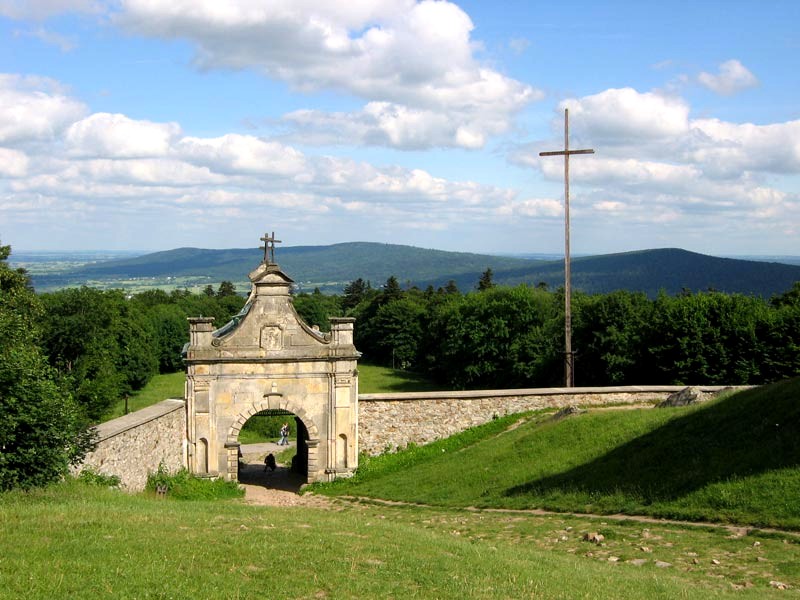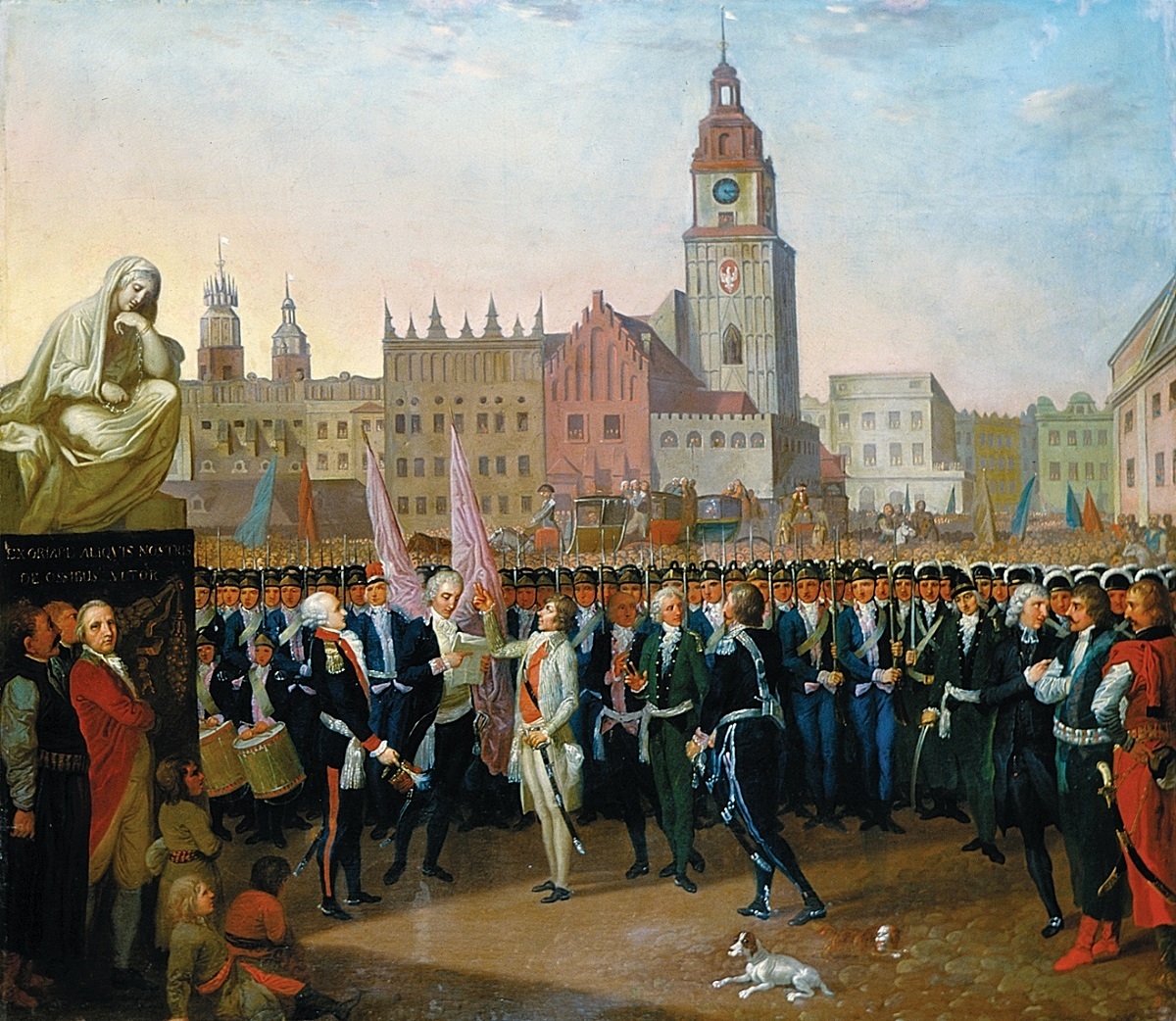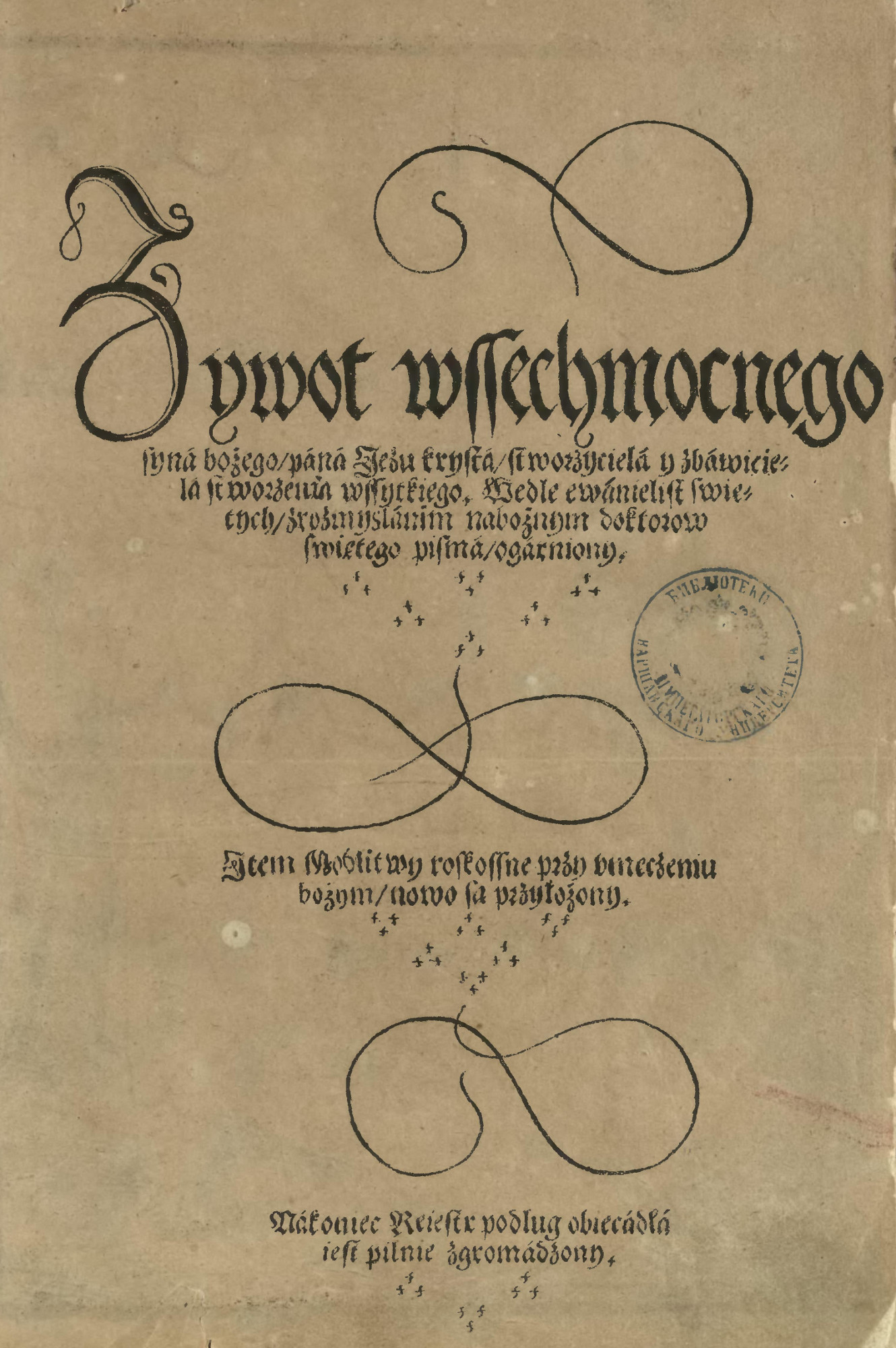|
Old Annals Of The Holy Cross
''Old Annals of the Holy Cross'' ( Polish: ''Rocznik świętokrzyski dawny'') is the oldest Polish written history, recording key events from the very beginnings of the Polish state. Annals dating from the first half of the 12th century (probably between 1122 and 1136), but its creator took the informations from an earlier yearbook ''Annales Regni Polonorum deperditi'' that has not survived. Its name is traditional, deriving from the place where it was stored – the Benedictine library at the Holy Cross Abbey on Łysa Góra. From at least the 13th century it belonged to the Krakow chapter, from the middle of the 15th century it belonged to the Holy Cross monastery, and in the middle of the 18th century it was acquired by the Załuski Library. After the Kościuszko Uprising Russians seized the library's holdings and transported them to Saint Petersburg. Recovered after the Treaty of Riga (1921), it was transferred to the National Library. It was evacuated to Canada in 1939 a ... [...More Info...] [...Related Items...] OR: [Wikipedia] [Google] [Baidu] |
National Library Of Poland
The National Library ( pl, Biblioteka Narodowa) is the central Polish library, subject directly to the Ministry of Culture and National Heritage of the Republic of Poland. The library collects books, journals, electronic and audiovisual publications published in the territory of Poland, as well as Polonica published abroad. It is the most important humanities research library, the main archive of Polish writing and the state centre of bibliographic information about books. It also plays a significant role as a research facility and is an important methodological center for other Polish libraries. The National Library was one of the first libraries in Europe that fulfilled the tasks of a modern national library in developing collections covering the entire body of Polish literature and making available to the public. Literature and making those works accessible to the public receives a copy of every book published in Poland as legal deposit. The Jagiellonian Library is the only ... [...More Info...] [...Related Items...] OR: [Wikipedia] [Google] [Baidu] |
Latin
Latin (, or , ) is a classical language belonging to the Italic branch of the Indo-European languages. Latin was originally a dialect spoken in the lower Tiber area (then known as Latium) around present-day Rome, but through the power of the Roman Republic it became the dominant language in the Italian region and subsequently throughout the Roman Empire. Even after the fall of Western Rome, Latin remained the common language of international communication, science, scholarship and academia in Europe until well into the 18th century, when other regional vernaculars (including its own descendants, the Romance languages) supplanted it in common academic and political usage, and it eventually became a dead language in the modern linguistic definition. Latin is a highly inflected language, with three distinct genders (masculine, feminine, and neuter), six or seven noun cases (nominative, accusative, genitive, dative, ablative, and vocative), five declensions, four verb conjuga ... [...More Info...] [...Related Items...] OR: [Wikipedia] [Google] [Baidu] |
Polish Language
Polish (Polish: ''język polski'', , ''polszczyzna'' or simply ''polski'', ) is a West Slavic language of the Lechitic group written in the Latin script. It is spoken primarily in Poland and serves as the native language of the Poles. In addition to being the official language of Poland, it is also used by the Polish diaspora. There are over 50 million Polish speakers around the world. It ranks as the sixth most-spoken among languages of the European Union. Polish is subdivided into regional dialects and maintains strict T–V distinction pronouns, honorifics, and various forms of formalities when addressing individuals. The traditional 32-letter Polish alphabet has nine additions (''ą'', ''ć'', ''ę'', ''ł'', ''ń'', ''ó'', ''ś'', ''ź'', ''ż'') to the letters of the basic 26-letter Latin alphabet, while removing three (x, q, v). Those three letters are at times included in an extended 35-letter alphabet, although they are not used in native words. The traditional ... [...More Info...] [...Related Items...] OR: [Wikipedia] [Google] [Baidu] |
Poland
Poland, officially the Republic of Poland, is a country in Central Europe. It is divided into 16 administrative provinces called voivodeships, covering an area of . Poland has a population of over 38 million and is the fifth-most populous member state of the European Union. Warsaw is the nation's capital and largest metropolis. Other major cities include Kraków, Wrocław, Łódź, Poznań, Gdańsk, and Szczecin. Poland has a temperate transitional climate and its territory traverses the Central European Plain, extending from Baltic Sea in the north to Sudeten and Carpathian Mountains in the south. The longest Polish river is the Vistula, and Poland's highest point is Mount Rysy, situated in the Tatra mountain range of the Carpathians. The country is bordered by Lithuania and Russia to the northeast, Belarus and Ukraine to the east, Slovakia and the Czech Republic to the south, and Germany to the west. It also shares maritime boundaries with Denmark and Sweden. ... [...More Info...] [...Related Items...] OR: [Wikipedia] [Google] [Baidu] |
Annals
Annals ( la, annāles, from , "year") are a concise historical record in which events are arranged chronologically, year by year, although the term is also used loosely for any historical record. Scope The nature of the distinction between annals and history is a subject based on divisions established by the ancient Romans. Verrius Flaccus is quoted by Aulus Gellius as stating that the etymology of ''history'' (from Greek , , equated with Latin , "to inquire in person") properly restricts it to primary sources such as Thucydides's which have come from the author's own observations, while annals record the events of earlier times arranged according to years. White distinguishes annals from chronicles, which organize their events by topics such as the reigns of kings, and from histories, which aim to present and conclude a narrative implying the moral importance of the events recorded. Generally speaking, annalists record events drily, leaving the entries unexplained and equally ... [...More Info...] [...Related Items...] OR: [Wikipedia] [Google] [Baidu] |
Łysa Góra
Łysa Góra (''Bald Mountain''; also known as Łysiec or Święty Krzyż) is a well-known hill in Świętokrzyskie Mountains, Poland. With a height of 595 metres (1,952 ft), it is the second highest point in that range (after Łysica at 612 meters or 2,008 ft). On its slopes and atop its summit are several hiking trails, the ruins of a pagan wall from 9th century, the Benedictine monastery ''Święty Krzyż'' from the 11th century (destroyed during the Second World War, now partially restored), and a Święty Krzyż TV Tower. The mountain also features prominently in a local legend about witches' sabbaths. Location Łysa Góra, composed primarily of quartzite and Cambrian slates, lies in the eastern part of the Łysogóry range, and is the second largest peak of the larger Świętokrzyskie Mountains (after Łysica). A notable summit within the Świętokrzyski National Park, it is a vital point in many sightseeing trails of the region. The blue path to Pętko ... [...More Info...] [...Related Items...] OR: [Wikipedia] [Google] [Baidu] |
Załuski Library
The Załuski Library ( pl, Biblioteka Załuskich, la, Bibliotheca Zalusciana) established in Warsaw in 1747 by Józef Andrzej Załuski and his brother, Andrzej Stanisław Załuski, both Roman Catholic bishops, was a public library nationalized and renamed upon its founders' death into the Załuski Library of the Republic ( pl, Biblioteka Rzeczypospolitej Załuskich) which existed until the final demise of Polish-Lithuanian Commonwealth in the Third Partition of Poland in 1795. Overview The library was the first Polish public library, the largest library in Poland, and one of the earliest public libraries in Europe. After the Kościuszko Uprising (1794), Russian troops, acting on orders from Czarina Catherine II, seized the library's holdings and transported them to her personal collection at Saint Petersburg, where a year later it formed the cornerstone of the newly founded Imperial Public Library. In the 1920s the government of the Russian Soviet Federative Socialist Republic r ... [...More Info...] [...Related Items...] OR: [Wikipedia] [Google] [Baidu] |
Kościuszko Uprising
The Kościuszko Uprising, also known as the Polish Uprising of 1794 and the Second Polish War, was an uprising against the Russian Empire and the Kingdom of Prussia led by Tadeusz Kościuszko in the Polish–Lithuanian Commonwealth and the Prussian partition in 1794. It was a failed attempt to liberate the Polish–Lithuanian Commonwealth from external influence after the Second Partition of Poland (1793) and the creation of the Targowica Confederation. Background Decline of the Commonwealth By the early 18th century, the magnates of Poland and Lithuania controlled the state – or rather, they managed to ensure that no reforms would be carried out that might weaken their privileged status (the "Golden Freedoms"). Through the abuse of the '' liberum veto'' rule which enabled any deputy to paralyze the Sejm (Commonwealth's parliament) proceedings, deputies bribed by magnates or foreign powers or those simply content to believe they were living in an unprecedented "Go ... [...More Info...] [...Related Items...] OR: [Wikipedia] [Google] [Baidu] |
Saint Petersburg
Saint Petersburg ( rus, links=no, Санкт-Петербург, a=Ru-Sankt Peterburg Leningrad Petrograd Piter.ogg, r=Sankt-Peterburg, p=ˈsankt pʲɪtʲɪrˈburk), formerly known as Petrograd (1914–1924) and later Leningrad (1924–1991), is the second-largest city in Russia. It is situated on the Neva River, at the head of the Gulf of Finland on the Baltic Sea, with a population of roughly 5.4 million residents. Saint Petersburg is the fourth-most populous city in Europe after Istanbul, Moscow and London, the most populous city on the Baltic Sea, and the world's northernmost city of more than 1 million residents. As Russia's Imperial capital, and a historically strategic port, it is governed as a federal city. The city was founded by Tsar Peter the Great on 27 May 1703 on the site of a captured Swedish fortress, and was named after apostle Saint Peter. In Russia, Saint Petersburg is historically and culturally associated with t ... [...More Info...] [...Related Items...] OR: [Wikipedia] [Google] [Baidu] |
Treaty Of Riga
The Peace of Riga, also known as the Treaty of Riga ( pl, Traktat Ryski), was signed in Riga on 18 March 1921, among Poland, Soviet Russia (acting also on behalf of Soviet Belarus) and Soviet Ukraine. The treaty ended the Polish–Soviet War. The Soviet-Polish borders established by the treaty remained in force until World War II. They were later redrawn during the Tehran Conference, Yalta Conference and Potsdam Conference. Background World War I removed former imperial borders across Europe. Following the Russian Revolution which had renounced Tsarist claims to Poland, as well as the Central Powers provisions for Congress Poland in the March 1918 Treaty of Brest-Litovsk, The Great War had ended with the collapse of the Central Powers. The Treaty of Versailles had re-established Poland's independence after a century and a half of being divided by three empires. The Russian Civil War presented an opportunity for Poland, under the leadership of Józef Piłsudski, to regain p ... [...More Info...] [...Related Items...] OR: [Wikipedia] [Google] [Baidu] |
Permanent Exhibition In The Palace Of The Commonwealth
Permanent exhibition in the Palace of the Commonwealth is an exhibition of the most valuable objects from the collection of the National Library of Poland in the baroque interiors of the Krasiński Palace, Palace of the Commonwealth in Warsaw. Background The exhibition features objects from Polish and global written heritage such as the Holy Cross Sermons, the Sankt Florian Psalter, the Old Annals of the Holy Cross, Gesta principum Polonorum, Polish Chronicle of Gallus Anonymus, Chronica seu originale regum et principum Poloniae, Chronicle of Wincenty Kadłubek and medieval and Renaissance works by European illuminators. Literary manuscripts are displayed in a special section of exhibition. They include manuscripts by Jan Kochanowski , Juliusz Słowacki, Adam Mickiewicz, Cyprian Kamil Norwid, Zbigniew Herbert and Czesław Miłosz. Items relating to musical culture are also on display, such as handwritten scores or original copies of works by Frédéric Chopin, Henryk Górecki, A ... [...More Info...] [...Related Items...] OR: [Wikipedia] [Google] [Baidu] |






